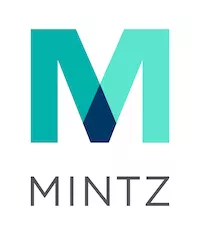- within Law Practice Management and Coronavirus (COVID-19) topic(s)
Earlier this month, the Department of Health and Human Services Office of the Inspector General (OIG) issued an advisory opinion (Advisory Opinion No. 19-03) (Opinion) concluding that a program consisting of free, in-home follow-up care to patients at a higher risk of admission or readmission (the Arrangement) was "low risk" under the civil monetary penalties prohibition on beneficiary inducement (the Beneficiary Inducement CMP). This comes as good news to hospitals and other providers who are focused on care coordination and value-based programs.
The Arrangement
Under the Arrangement the Medical Center would provide free, in-home follow up care to patients with congestive heart failure (CHF) and chronic obstructive pulmonary disease (COPD), who are at a higher risk of admission or readmission to a hospital. Patients who meet certain eligibility criteria would receive two visits from a community paramedic each week for about 30 days following enrollment in the program. During the visit, the community paramedic would deliver interventions and assess whether follow-up care is necessary. The Medical Center's stated goal is to increase patient compliance with discharge plans, improve patient health, and reduce hospital inpatient admissions and readmissions.
OIG Analysis
The OIG determined that the Arrangement would implicate the Beneficiary Inducement CMP as the services provided under the Arrangement constitute remuneration that could influence a patient to select the Medical Center for federally reimbursable items and services. Moreover, the OIG stated that the Arrangement would not be protected by the "Promotes Access to Care Exception" under the Beneficiary Inducement CMP because the services offered pursuant to the Arrangement do not promote a patient's access to care. The OIG noted that the in-home follow up visit performed by the community paramedic does not improve a patient's ability to obtain federally reimbursable items or services, nor does it remove socioeconomic, educational, geographic, or other barriers that could prevent a patient from receiving care.
However, the OIG concluded that in an exercise of its discretion, it would not impose sanctions under the Beneficiary Inducement CMP or the Anti-Kickback Statute (AKS) due to the implementation of the following safeguards, which the OIG determined made the Arrangement "sufficiently low risk":
- A patient must select the Medical Center for follow up services related to his or her CHF or COPD before being informed of the Arrangement. As a result, there is a low risk that the Arrangement will induce patients to select Medical Center for CHF or COPD related services as patients have already made such determination before being informed of the Arrangement. Moreover, the community paramedics will direct patients to follow up with their established provider, whether or not such provider is the Medical Center, for any additional care.
- With the exception of one Medicaid program in Medical Center's service area, the services provided under the Arrangement are not reimbursed by Federal health care programs. As a result, the Arrangement is unlikely to increase costs related to Federal health care programs, and could result in savings to such programs by improving patient health and reducing hospital inpatient admissions and readmissions.
- Medical Center will not compensate any employee or contractor based on the number of patients enrolled in the program. As a result, there is a low risk that the Arrangement will interfere or skew clinical decision making.
- There is a negligible risk that patients will be induced to select the services offered by Medical Center as the Arrangement will not be advertised to the public nor publicized on Medical Center's website.
- The scope and duration of the services provided under the Arrangement are "reasonably tailored" to accomplish Medical Center's goal of increasing patient compliance with discharge plans, improving patient health, and reducing hospital inpatient admissions and readmissions.
Takeaways
The Opinion provides several noteworthy insights. First, the Opinion serves as another example of the difficulty of fitting value-based arrangements into existing regulatory frameworks. In the Opinion, the OIG notes that the "broad reach" of the AKS is a "potential impediment to beneficial arrangements that would advance coordinated care". Second, providers in this space should be mindful of the OIG's restrictive interpretation of the Promotes Access to Care Exception and take note of the previously mentioned safeguards to reduce risk when implementing similar value-based programs. We will continue to follow these developments.
The content of this article is intended to provide a general guide to the subject matter. Specialist advice should be sought about your specific circumstances.



